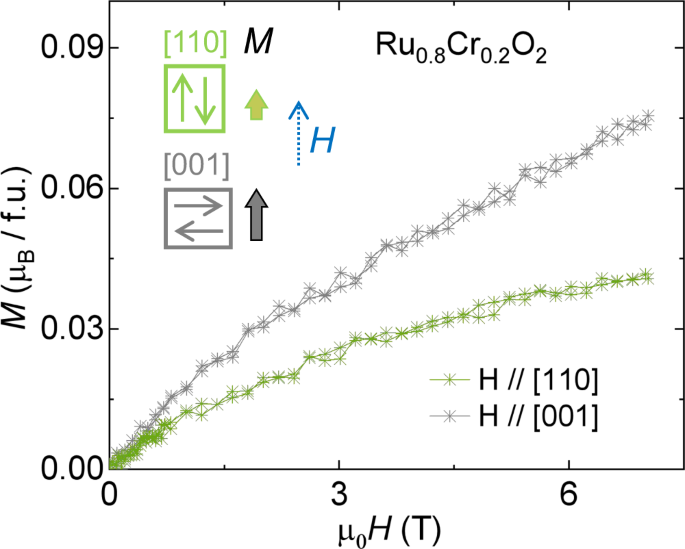Phys.org March 26, 2024
Magnets with a rutile crystal structure may be possible platform for a collinear-antiferromagnetism-induced anomalous Hall effect (AHE). RuO2 is a prototypical candidate material, however the AHE is prohibited at zero field by symmetry. An international team of researchers (Japan, China) showed AHE at zero field in Cr-doped rutile, Ru0.8Cr0.2O2. Their calculations indicated that appropriate doping of Cr at Ru sites reconstructed the collinear antiferromagnetism in RuO2, resulting in a rotation of the Néel vector from [001] to [110] while maintaining a collinear antiferromagnetic state. The AHE with vanishing net moment in the Ru0.8Cr0.2O2 exhibited an orientation dependence consistent with the [110]-oriented Hall vector. According to the researchers their results demonstrated that material engineering by doping is a useful approach to manipulate AHE in antiferromagnetic metals… read more. Open Access TECHNICAL ARTICLE

Magnetic anisotropy and Néel vector orientation in Ru0.8Cr0.2O2… Credit: Nature Communications volume 14, Article number: 8240 (2023)